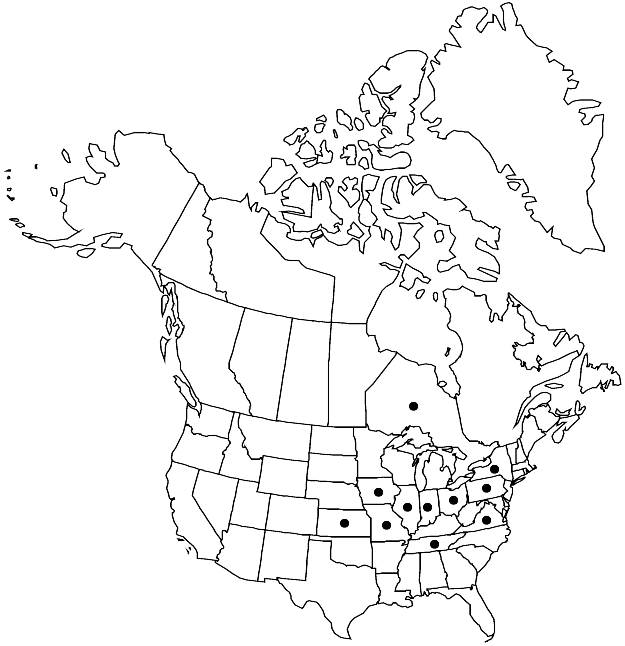Arabis pycnocarpa var. adpressipilis
Rhodora 39: 117. 1937.
Stems pilose, trichomes appressed, malpighiaceous, or minutely stalked, forked, plants rarely glabrescent. Basal leaves: blade surfaces pubescent, trichomes sessile, forked, and/or stellate. Fruits (4–) 4.5–6 (–6.5) cm; style 0.5–1.3 mm.
Phenology: Flowering Mar–Jun.
Habitat: Ravines, pastures, cliffs, calcareous talus, dolomite glades, rich woods, bluffs, rocky ledges
Elevation: 0-300 m
Distribution

Ont., Ill., Ind., Iowa, Kans., Mo., N.Y., Ohio, Pa., Tenn., Va.
Discussion
R. C. Rollins (1941, 1993) recognized both pycnocarpa and adpressipilis as distinct varieties of Arabis hirsuta; G. A. Mulligan (1996) treated adpressipilis as a synonym of A. hirsuta var. pycnocarpa. In my opinion, the differences in trichome morphology of the stems and leaves are significant enough to justify recognition of infraspecific taxa of one species.
Selected References
None.
Lower Taxa
"elongated" is not a number."thick" is not a number."dm" is not declared as a valid unit of measurement for this property.